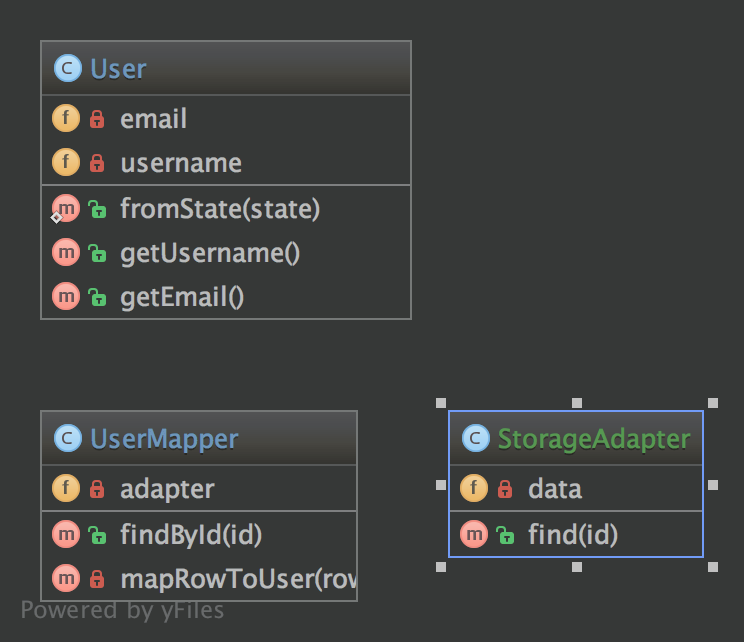Data Mapper Pattern
A Data Mapper, is a Data Access Layer that performs bidirectional transfer of data between a persistent data store (often a relational database) and an in memory data representation (the domain layer). The goal of the pattern is to keep the in memory representation and the persistent data store independent of each other and the data mapper itself. The layer is composed of one or more mappers (or Data Access Objects), performing the data transfer. Mapper implementations vary in scope. Generic mappers will handle many different domain entity types, dedicated mappers will handle one or a few.
The key point of this pattern is, unlike Active Record pattern, the data model follows Single Responsibility Principle.
DB Object Relational Mapper (ORM).

StorageAdapter
namespace DesignPatterns\Structural\DataMapper;
class StorageAdapter
{
public function __construct(private array $data)
{
}
/**
* @return array|null
*/
public function find(int $id)
{
if (isset($this->data[$id])) {
return $this->data[$id];
}
return null;
}
}
User
namespace DesignPatterns\Structural\DataMapper;
class User
{
public static function fromState(array $state): User
{
// validate state before accessing keys!
return new self(
$state['username'],
$state['email']
);
}
public function __construct(private string $username, private string $email)
{
}
public function getUsername(): string
{
return $this->username;
}
public function getEmail(): string
{
return $this->email;
}
}
UserMapper
namespace DesignPatterns\Structural\DataMapper;
use InvalidArgumentException;
class UserMapper
{
public function __construct(private StorageAdapter $adapter)
{
}
/**
* finds a user from storage based on ID and returns a User object located
* in memory. Normally this kind of logic will be implemented using the Repository pattern.
* However the important part is in mapRowToUser() below, that will create a business object from the
* data fetched from storage
*/
public function findById(int $id): User
{
$result = $this->adapter->find($id);
if ($result === null) {
throw new InvalidArgumentException("User #$id not found");
}
return $this->mapRowToUser($result);
}
private function mapRowToUser(array $row): User
{
return User::fromState($row);
}
}
Tests
public function testCanMapUserFromStorage()
{
$storage = new StorageAdapter([1 => ['username' => 'domnikl', 'email' => 'liebler.dominik@gmail.com']]);
$mapper = new UserMapper($storage);
$user = $mapper->findById(1);
$this->assertInstanceOf(User::class, $user);
}
public function testWillNotMapInvalidData()
{
$this->expectException(InvalidArgumentException::class);
$storage = new StorageAdapter([]);
$mapper = new UserMapper($storage);
$mapper->findById(1);
}
Ready to bring your vision to life?
We believe in excellence, empathy, integrity, and transparency throughout the process. Our goal is to build fast, responsive websites that not only perform but also reflect your values and vision.